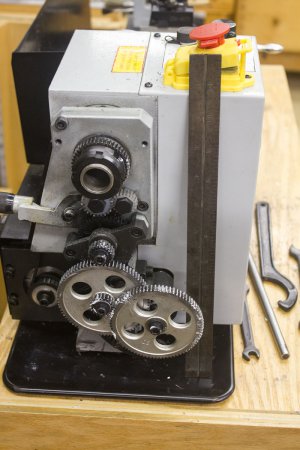I guess there's two aspects to this potential project. The first is whether it's worth putting on an ELS onto such a small lathe. So far, I haven't run into any problems with the size. I've been able to turn everything I need to. I would LOVE to be able to take bigger cuts. That's where this lathe is lacking. I see youtube videos where they are taking deep cuts on a full size lathe without issue that I could only dream of on my lathe. I would need to take 3, 4, 5 or more times as many cuts to achieve the same thing. A little more rigidity would be nice as well.
The second aspect is actually attaching this to the lathe. See pic below with a 12" rule for reference. I think mounting the stepper might be fairly straightforward, but the encoder on the main spindle looks challenging. It seems a little tight in there. I have no problems dealing with the electronics and wiring since I just finished converting my PM25 to CNC. Mounting the encoder and stepper looks more challenging. Also, I've never dealt with stepped pulleys and belts. Where to get? What size? etc.
View attachment 331605


